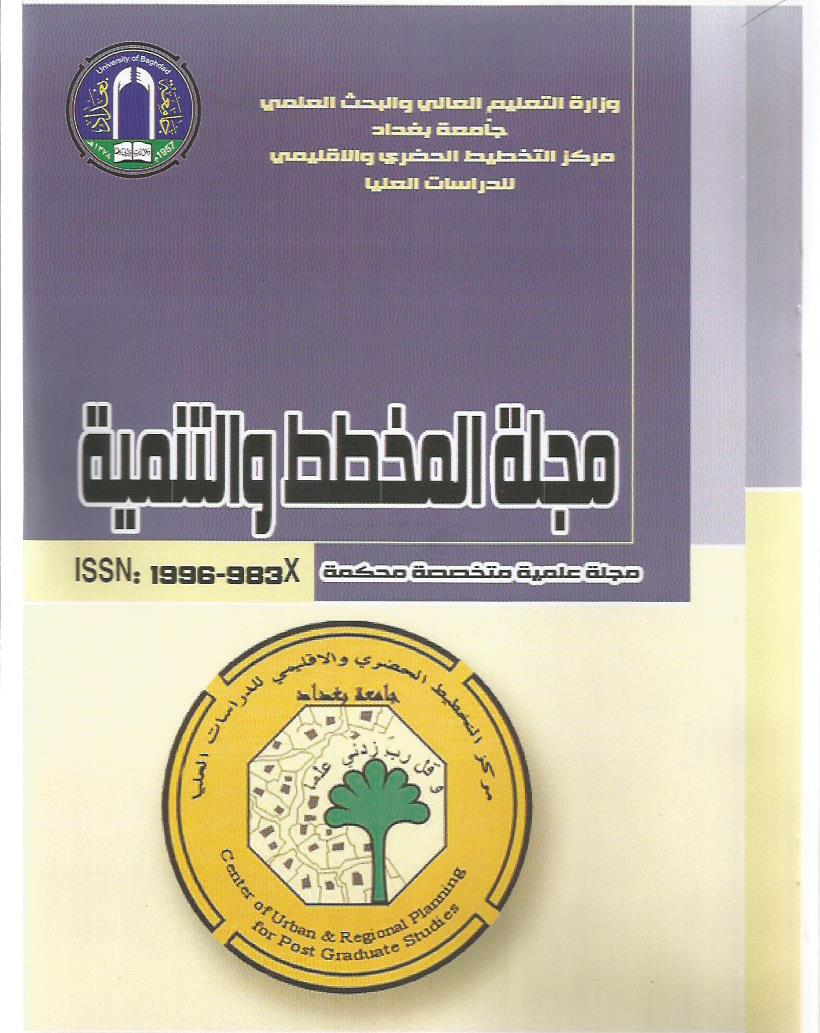“Partition of Residential Plots and its Impact on Infrastructure Services (Potable Water & Sanitation)” Case Study BAGHDAD City - New Baghdad - neighborhood #731
Abstract
Characterized by the housing situation widening gap between housing need and housing stock accompanied by the absence of the state, which will policies to develop solutions to such a problem although taken several decisions issued a re-secretion resolutions (850 of 1979 & 940 of 1987), followed by circular to allow the addition of a third floor and the inclusion of all residential areas these decisions regardless of its class, which ranked him among roads and buildings law, and despite the fact that legislation has already been increasing and breadth of the phenomenon of retail residential cut, but it has emerged in this period as a result of social, economic and security changes and the absence of control by state agencies that accompanied, prompting the establishment of residential units in addition to the violation of legal fragmented units and thus doubled the number of housing units in the territories, which emerged phenomenon, which initiated receive In terms of and their impact on residential shops and the provision of services down to the level of the city as whole.
The a problem “Partition of Residential Plots” and the accompanying deterioration in the level of infrastructure services from the problems faced by most of the Iraqi cities, especially Baghdad city to the growing phenomenon in recent times and for several reasons, including the social, economic and for being the capital, especially in the period after 2003, and thus The study assumed that the efficiency and adequacy of infrastructure services are adversely affected by this phenomenon.
The study aims tagged “Partition of Residential Plots and its Impact on Infrastructure Services (Potable Water & Sanitation)” to study the efficiency and adequacy of infrastructure services under fragmented pieces of residential land by studying the reasons for the retail and the results led to them regarding my service drinking water process and sanitation.
The study adopted the Questionnaire (Special Questionnaire scheme and decision-makers, the Special Questionnaire for residents) to guide their opinions to be utilized in any planning process concerning the phenomenon in the future, the study found to create linear models to calculate the amount of water consumed in the housing unit and the factors influencing them and thus the possibility of calculating the amount of sewage accrued as a result of consumption and thus the possibility of comparing the design capacity for private networks for the services under study.
The study recommended developing a database for each neighborhodwith the residents and the number of its residential units to study the efficiency of network increased by segment residential legal space down through to the extent that it is not allowed to increase beyond the possibility of introducing the offense units corrects the legal status removal partial compliance with the parameters and standards and applicable laws and to stop the work\'s decision to re-residential secretion in existing zones and adoption in the new areas, as the study recommended reducing the approved consumption of water to reduce pressure on the exchange service on the one hand and to avoid extravagance and waste of water resources on the other hand, the standard in addition to the separation of sewage service networks of both types (domestic and rain) to avoid or minimize the damage as a result of rain Add to several recommendations that would limit and reduce the effects of the phenomenon studied.



